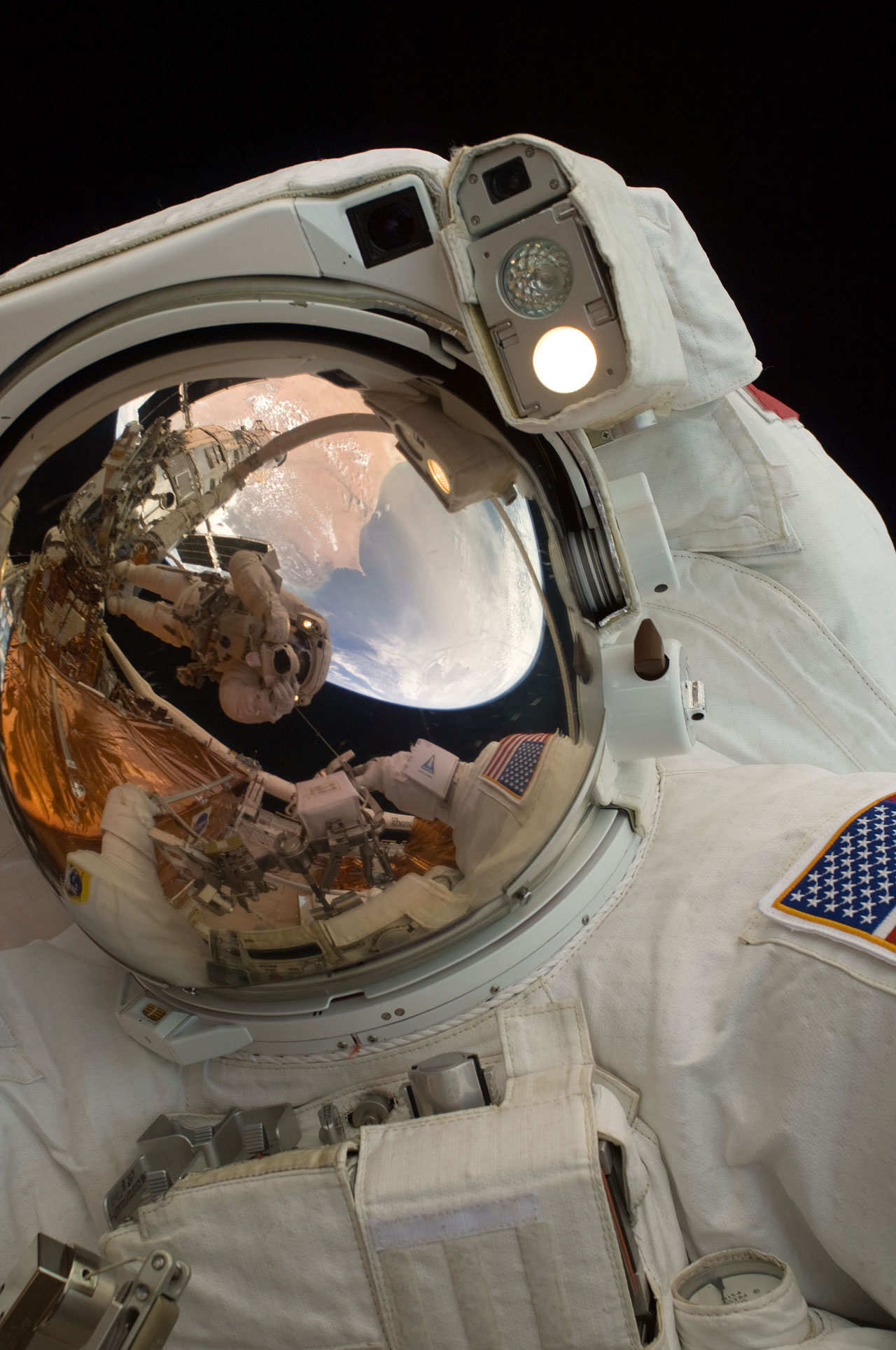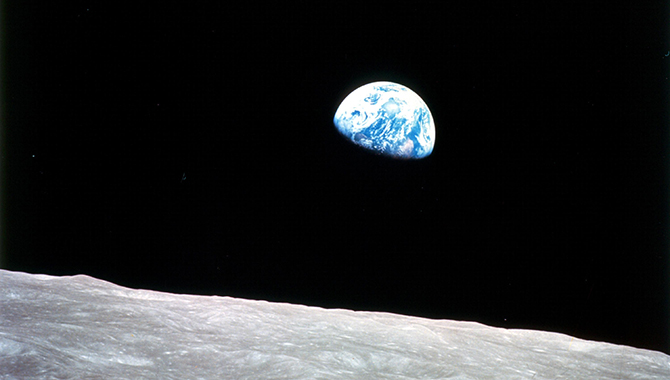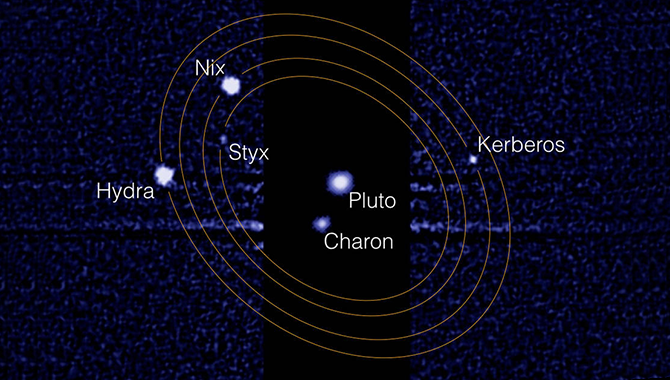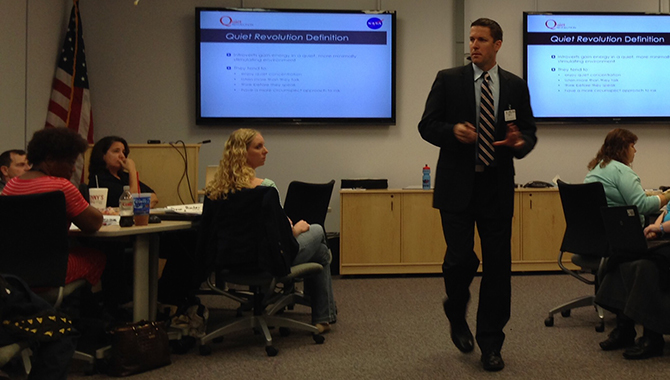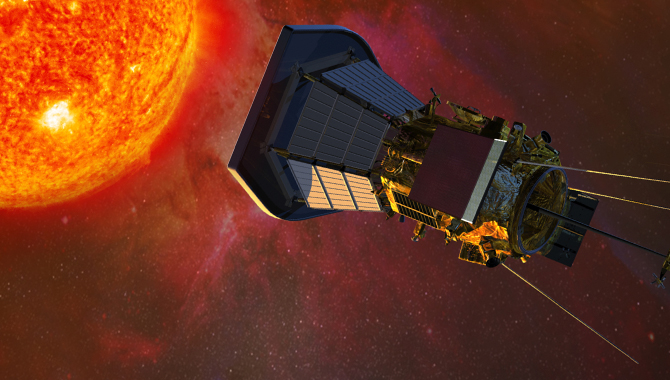
In 2018, NASA will launch the Solar Probe Plus, shown in this artist’s impression. The Solar Probe Plus will fly closer to the sun than any spacecraft ever has to examine a previously unexplored region of the solar system.
Image Credit: JHU/APL
NASA and the Smithsonian Air and Space Museum convened a panel of experts to discuss the impact of solar weather on space exploration as well as Earth-based activities.
For early Earth dwellers, the sun was a yellow disk in the sky that conferred warmth to the planet and supported the growth of crops. Even after astronomers began to take notice of the shifting spots on the surface of the sun—and to wonder what, if anything, they signified—most people were oblivious to their effects.
That has changed significantly over the past century. As civilization has evolved, so has our dependence on such technology as GPS, radar, and communications satellites—all of which are affected by solar events. Even during the early days of radio and telegraph use, some people noticed a correlation between equipment malfunction and an increase in the number of spots on the sun.
“Sometimes there are many sun spots and sometimes there are few. The sun has seasons, commonly known as the solar cycle or the sun-spot cycle. A solar cycle has an average of 11 years,” said Barbara Thompson from Goddard Space Flight Center (GSFC). A solar physicist who has worked on NASA’s Solar Terrestrial Relations Observatory (STEREO) mission, Thompson spoke as part of the Smithsonian’s “What’s New in Aerospace?” program.
Solar observations, initially from ground-based telescopes and more recently from missions such as STEREO, have established that sun spots are actually powerful magnetic fields extending out from the sun’s interior into the star’s atmosphere, known as the corona.
“Every change, every aberration on the sun is due to its magnetic field. And that magnetic field extends far beyond sun spots, far beyond the normal visible sun, to fill the void in space between the planets,” said Thompson. “The solar wind is a steady stream from the sun punctuated by huge eruptions of material and magnetic field. These eruptions—coronal mass ejections [CMEs]—drive space weather impacts throughout the heliosphere.”
CMEs can blast up to 10 billion tons of matter into space. This produces solar storms that affect the accuracy of technology on Earth and beyond, including GPS and airlines communications. While Earth’s magnetic field protects the planet from many of the harmful effects of space weather, its poles are more vulnerable. Solar charged particles, such as electrons and protons, can more easily penetrate the magnetic shield at the poles, where they collide with elements in the atmosphere to produce aurora, commonly called northern lights or aurora borealis. The more intense the solar storm, the more vivid the display of lights.
Variations in space weather are not just an issue on Earth. Astronauts are classified as radiation workers given the amount of exposure to solar radiation they experience in space. Inside environments such as the International Space Station (ISS), the effect of solar storms is somewhat mitigated. But during spacewalks, only a few layers of cloth stand between the astronaut and the charged particles in the solar wind.
Even spacecraft can’t completely protect astronauts. John Grunsfeld, former Science Mission Directorate (SMD) Associate Administrator, traveled into space five times on the space shuttle, where he was exposed to energetic solar particles. “I remember waking up in the middle of the night and seeing a light show. But I had my eyeshades on. It was the charged particles going through my eyeballs, creating little sparks of light. It was fascinating to watch. I couldn’t go back to sleep, I was so fascinated by knowing that these were mostly protons going through my eyeballs, and occasionally maybe a higher energy cosmic ray or a higher mass like a carbon or an oxygen, traveling nearly the speed of light, zipping through my head, zipping through the space shuttle, all of us on board. And it wasn’t a frightening thought at all. It was a beautiful thought. But it’s radiation: it can be harmful.”
The level of space radiation caused by charged solar particles increases during solar storms. The larger the CME, the bigger the impact. Solar radiation will be an even greater issue for crew traveling beyond the protective bubble of Earth’s atmosphere to cis-lunar space or Mars.
“Mars is very much like Earth. It has an atmosphere. You can see clouds in the atmosphere. But it’s a very thin atmosphere. It’s not enough to stop galactic cosmic rays or protons from very large solar events. Its magnetic field died away billions of years ago, so it doesn’t have that protective envelope,” said Grunsfeld. “The point is that when we talk about space weather, it’s not just about the earth and the sun; it’s about our whole solar system. It’s interplanetary.”
“Mars is out there in the solar wind and interplanetary space just like a comet. The solar wind and coronal mass ejections interact directly with Mars and, in fact, remove its atmosphere,” said Janet Luhmann, Senior Fellow at the Space Sciences Laboratory, University of California, Berkeley.
“Space weather matters not just for Earth,” she added. “It’s probably played a role in the way the planets evolved over time—in particular their atmospheres. And we’re working very hard to understand both the details of the physics of how space weather is affecting the various kinds of planetary environments and what the consequences are and will be in the future.”
Ongoing heliophysics missions—such as STEREO, the Advanced Composition Explorer (ACE), and the National Oceanographic Atmospheric Administration’s (NOAA) Deep Space Climate Observatory (DSCOVR), which features NASA’s Earth Polychromatic Imaging Camera (EPIC)—are helping answer these and other questions about space weather and its effects on Earth as well as the solar system overall.
Over the next two years, NASA will launch additional missions to study space weather, including the Solar Probe Plus and the joint NASA/European Space Agency (ESA) Solar Orbiter. Launching in 2018, the Solar Probe Plus will explore the sun’s outer atmosphere, going closer to our star than any spacecraft has before as it makes direct, in-situ measurements within the solar corona.
Thomas Zurbuchen, current NASA SMD Associate Administrator and a heliophysicist, emphasized the importance of studying the sun and its far-reaching effects as the agency moves forward on the journey to Mars: “[J]ust as early seafarers needed to map out the seas…and understand their environment, their storms, before they could travel safely, we need to understand our neighborhood as we explore farther and farther from home.”
Watch the sun emit a massive CME as seen by NASA’s fleet of heliophysics spacecraft, including STEREO, the Solar Dynamics Observatory (SDO), and the NASA/ESA Solar and Heliospheric Observatory (SOHO).
Learn more about NASA’s upcoming Solar Probe Plus mission.






